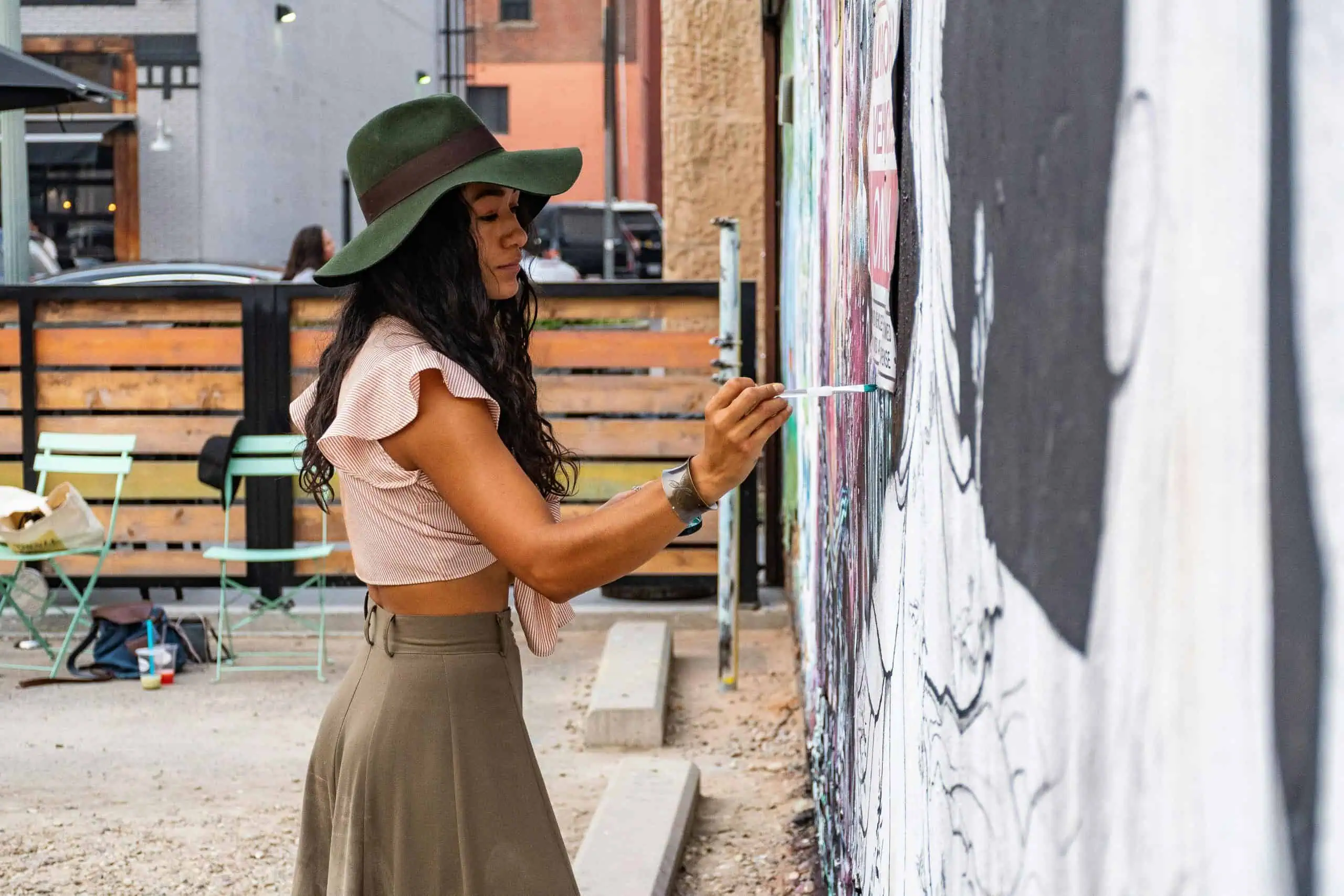Welcome to your complete guide to starting the journey into the art industry! Whether you’re a recent graduate, looking to shift careers, or a budding artist ready to explore your options, this guide provides all the essential information you need. Art jobs aren’t just about having a knack for creativity; they include a range of roles requiring varying skills and qualities that can lead to fulfilling career paths. We’ll explore the diverse opportunities available in the art field, the essentials of landing your first art job, the significance of education and training, tips on building an impactful portfolio, and strategies for finding and securing the desired job. We’ll also tackle frequently asked questions and prepare you for what to expect in the workforce.
Launch your art career journey with confidence and clarity. Let’s dive into the exciting world of art jobs and discover how you can turn your passion into a profession.
Exploring Art Jobs: A World of Opportunities
When you think of art jobs, what comes to mind? Perhaps painters or sculptors. However, the field of art extends far beyond these classic roles. Today, opportunities for art jobs are ever-expanding and influenced by technological advances and new media. This diversity allows artists of all disciplines to find a niche that suits their skills and passions perfectly.
Diverse Roles in the Art World
Art jobs aren’t just about creating traditional works. They also encompass roles like digital designers, animators, and art directors. Each position is crucial in the broader visual and conceptual storytelling landscape. For example:
- Graphic Designers – They create visual concepts using software to communicate ideas that inspire, inform, or captivate consumers.
- Art Therapists – Using the creative process of art making to improve and enhance the physical, mental, and emotional well-being of individuals of all ages.
Impact of Technology on Art Jobs
Technology has transformed art jobs, introducing roles like 3D modelers and virtual reality designers. This evolution means artists can work on anything from video games to virtual simulations.
Why Pursue a Career in Art?
Careers in art offer the chance to express oneself creatively, contributing to cultural richness and diversity. They provide a platform to influence society and evoke emotional responses through various mediums. Art careers can be highly flexible, allowing for freelance opportunities and self-employment.
Connecting with the Global Art Scene
Being part of the art world today means connecting with audiences and cultures globally. Artists are no longer confined to local audiences but can engage with fans and critics worldwide.
Further resources for emerging artists can be explored through reputable sites such as the National Endowment for the Arts or educational articles at academic institutions like Stanford University Art Department’s website.
The Basics of Art Jobs
Understanding the core aspects of art jobs is crucial for anyone interested in venturing into this field. Art jobs vary significantly in terms of roles, requirements, and outcomes. Here, we delve into what makes art professions unique and what foundational skills are necessary.
Key Skills and Traits
To succeed in art-related careers, certain skills and traits are essential:
- Creativity – The ability to develop new and original ideas is fundamental.
- Technical proficiency – Depending on the role, skills in specific software or techniques might be required.
- Visual awareness – A keen eye for detail and aesthetics helps in nearly all art disciplines.
- Communication – Effective communication can enhance collaborative projects and client relationships.
Educational Requirements
While not all art jobs require formal education, many employers seek candidates with at least some professional training. Degrees in fine arts, graphic design, or digital media offer foundational knowledge and skills that can be critical for success. Certifications in specific software or artistic techniques can also boost a resume.
Work Environment and Flexibility
Art jobs often offer diverse work environments, from studios and galleries to digital spaces and on-site installations. Many artists also enjoy the flexibility of freelance or remote work, which allows for a balance between personal and professional life.
For more insights on educational pathways, visiting resources like the Smithsonian’s Educator Center can provide valuable information. Additionally, career growth in the arts can be enriched by following platforms discussing artistry.
Popular Art Job Roles and Their Duties
Art jobs encompass a wide range of roles, each with unique responsibilities. Understanding the duties of different positions can help you identify the best fit for your skills and interests.
Visual Artists
Visual artists create pieces using mediums like paint, sculpture, or digital tools. They often exhibit their work in galleries or public spaces, engaging with audiences directly.
Illustrators
Illustrators craft images for books, magazines, and digital media. They often collaborate with authors and publishers to visually bring stories and concepts to life.
Art Directors
Art directors lead magazine design teams, ad agencies, and movie productions. They ensure the visual style aligns with the project’s goals and manage timelines and budgets.
Museum Curators
Museum curators oversee collections of artwork and historical items. They organize exhibitions, write grant proposals, and conduct educational programs to engage the community.
Each of these roles contributes significantly to the vibrant diversity of the art world. These positions offer just a glimpse into the dynamic nature of the field, where creativity meets career. Getting insight from experienced professionals can also provide a solid foundation, as seen in resources like the Metropolitan Museum’s art collection. It offers a deeper understanding and appreciation of the terrain of art careers.
Getting Started in Art Jobs
Starting a career in art jobs can be as exciting as it is intimidating. You can pave a smooth path into this creative field with the right steps.
Research and Exploration
Begin by exploring different art careers and understanding what each entails. Online forums and local art councils can provide insights and advice from seasoned professionals. This stage is crucial for aligning your interests with the right art job.
Networking
Building connections is vital in the art world. Attend gallery openings, workshops, and conferences to meet other artists and potential mentors. Networking can open doors to opportunities not typically found in job listings.
Gaining Experience
Gaining practical experience through internships, volunteering, or small freelance projects is invaluable. Each project helps build your portfolio and refine your skills, making you a more attractive candidate for future art jobs.
Remember, the journey into art jobs requires patience and persistence, but you can establish a rewarding career with deliberate steps. For additional resources on getting started, websites like the Smithsonian Learning Lab offer educational tools that can enrich your understanding and skills.
Training and Education Paths for Art Careers
Formal education and training can significantly enhance your prospects in art jobs.
Art Schools and Universities
Bachelor’s and Master’s degrees in fine arts, graphic design, or digital media provide technical skills and theoretical knowledge. Schools like the Rhode Island School of Design offer specialized programs for budding artists.
Online Courses and Workshops
Many institutions and platforms offer online classes that can be a flexible option for learning. Websites like Coursera and Udemy have courses in everything from digital painting to art history.
Apprenticeships
Learning directly under a practicing artist or within an art-focused company can provide hands-on experience that is difficult to gain in a classroom. It’s also a great way to network within the industry.
Certifications and Short Courses
Certification in specialized software like Adobe Photoshop or Autodesk Maya can be crucial for graphic design and animation fields. Short courses in newer areas like virtual reality offer a competitive edge.
Whether opting for a formal university program or online resources, ongoing education is critical in art careers. Resources like the National Endowment for the Arts provide valuable insights into the benefits of education in the arts. Cultural expression can enhance an artist’s work and understanding, as discussed in articles like Exploring the Cultural Significance of Food.
Building a Portfolio: A Key Step
A standout portfolio is essential for securing art jobs. It showcases your skills, style, and scope of work and serves as your professional calling card.
What to Include in Your Portfolio
Your portfolio should be a carefully curated collection of your best work. Include a variety of projects to demonstrate your versatility, or focus on a specialized style if you’re targeting niche art jobs. Each piece should reflect your highest quality of work.
Using Digital Platforms
In today’s digital age, an online portfolio is crucial. Platforms like Behance or LinkedIn allow you to reach a broad audience, including potential employers worldwide. Regular updates can keep your work fresh and engaging.
Feedback and Improvement
Seek feedback on your portfolio from peers and mentors. This input can provide new perspectives and suggestions for improvement. Attending professional workshops or critiques can also offer constructive feedback.
Your portfolio is more than just a collection of your work; it reflects your professional journey in art jobs. Continuously updating your portfolio as you grow ensures it evolves with your career. For further guidance on building a robust portfolio, engaging with established artists and visiting online resources like the Art Institute’s portfolio tips can be invaluable.
Where to Find Art Jobs
Finding the right art job requires knowing where to look. Several avenues can lead to opportunities in traditional and digital art scenes.
Online Job Platforms
Websites specifically for creatives, like ArtStation and CreativeHeads, post job listings worldwide. General job search engines like Indeed also frequently list art jobs.
Art Galleries and Museums
Local galleries and museums often offer positions that provide valuable industry experience. These roles can range from curatorial positions to educational outreach coordinators.
Festivals and Community Events
Participating in art festivals and community events can lead to job opportunities and connections. These venues are perfect for artists looking to engage directly with the public and other professionals in the field.
Freelancing
Many artists start their careers as freelancers. Websites like Freelancer and Upwork can be great starting points for finding freelance art jobs. Establishing a good network and a strong online presence can also attract clients directly to you.
Consider exploring your local government resources or educational institutions for more in-depth guidance on finding art jobs in your area. Additionally, celebrating global cultural festivals can provide exposure and networking opportunities that might lead to potential job offers. Valuable resources like USA.gov/state-jobs can also provide information on jobs available within government-funded arts programs.
Preparing for Interviews in the Art Industry
Preparation is vital to making a good impression once you land an interview for an art job.
Research the Company or Gallery
Learn about the company’s history, art style, and recent projects. This knowledge will show your interest and dedication.
Review Your Portfolio
Ensure your portfolio is up-to-date and tailored to the job. Highlight pieces that align with the company’s work.
Practice Common Interview Questions
Prepare answers for common questions like “What inspires your art?” or “Describe your creative process.” Being prepared can keep you calm during the interview.
Prepare Your Questions
Have a list of questions ready to ask about the role, the team, and future projects. This demonstrates your enthusiasm and engagement.
Interviews for art jobs are unique opportunities to showcase your skills, personality, and vision. A thoughtful preparation can set you apart from other candidates. For additional tips on acing art job interviews, helpful guidelines can be explored on educational sites like the Museum of Modern Art’s career page.
FAQs
What qualifications do I need to work in art jobs?
While formal qualifications like a degree in fine arts can be beneficial, they are not always necessary. A strong portfolio and practical experience can also open doors in the art world.
Are art jobs well-paid?
Salaries can vary widely depending on the role, experience, and location. Some art jobs, like art directors or lead designers, are higher-paying than entry-level.
Is it hard to find work in the art industry?
Finding work can be challenging and competitive, but numerous opportunities exist, especially with the rise of digital media. Networking and maintaining an active online presence can improve your chances.
Can I work remotely in art jobs?
Yes, many art jobs, especially in graphic design and digital content creation, offer the flexibility to work remotely.
How often should I update my portfolio?
Your portfolio should be updated regularly, ideally whenever you complete a project that showcases new skills or concepts.
These FAQs aim to address some common queries for those considering or starting in art jobs, offering a clearer understanding of the challenges and opportunities in the field.
Conclusion
The field of art offers a multitude of diverse and dynamic opportunities for creative individuals. From traditional roles like painting and sculpting to modern positions in digital media and design, art jobs continue to evolve with technological advancements and cultural shifts. Success in this industry relies on creativity, ongoing education, and strategic networking. If you’re passionate about embarking on an art career, remember to continuously develop your skills, update your portfolio, and connect with professionals in the industry. Also, consider the value of flexibility and preparedness, especially when exploring opportunities or preparing for interviews in your diversity job search.
We invite you to upload your resume on Diversity Employment, where you can discover various art job opportunities that embrace diversity and creativity. Together, let’s build an inclusive community where your artistic skills can flourish and contribute to the vibrant tapestry of the global art scene.




